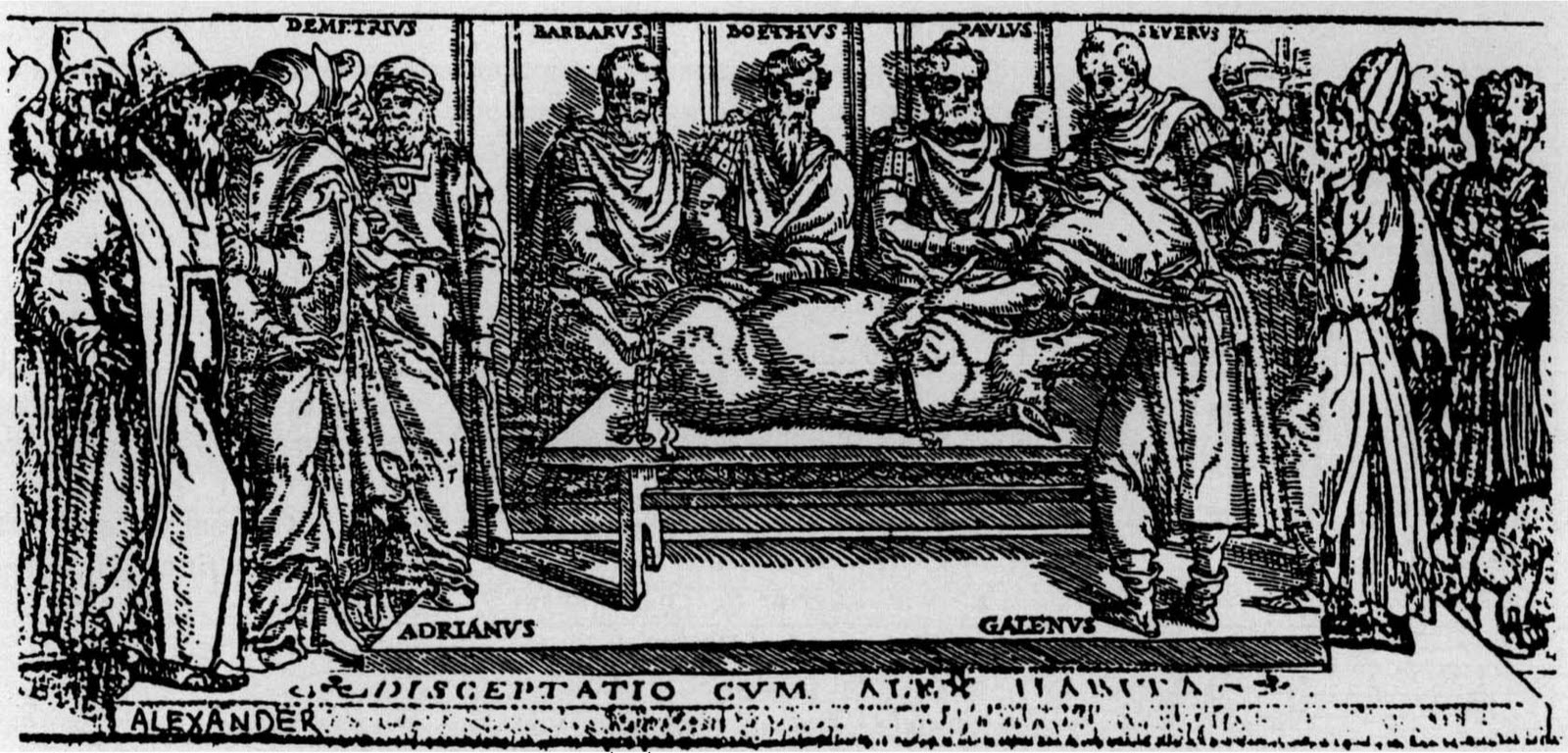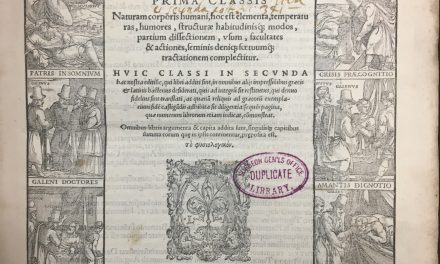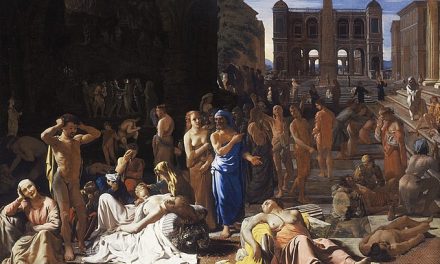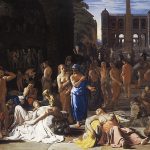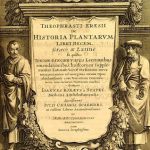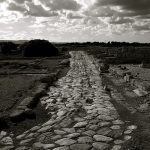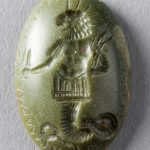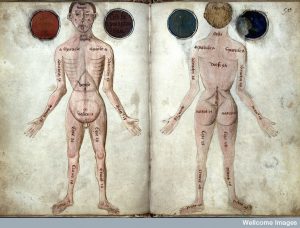
L0024514 Western Manuscript 290. English anatomy mss
Credit: Wellcome Library, London. Wellcome Images
images@wellcome.ac.uk
http://wellcomeimages.org
Muscle man illustrations, front and back views. The circles on either side of the head illustrate the four supposed ventricles of the brain.
mid 15th century Anathomia, (English)
Claudius (Pseudo) Galen
Published: –
Copyrighted work available under Creative Commons Attribution only licence CC BY 4.0 http://creativecommons.org/licenses/by/4.0/
It is fair to say that last month’s conference at the Warburg Institute about “pseudo-Galenic texts and the formation of the Galenic corpus” was successful: speakers all gave substantial papers, presented a lot of new evidence and discussed old controversies around the authenticity of some of Galen’s works. The conference embraced a long period, from Galen’s own lifetime (2nd c. AD) to the 17th c. Texts in several languages were discussed (Greek, Latin, Arabic, Syriac, Hebrew). About 50 people attended the event, which, by Classics conferences standards, is a very good turnout.
Reflecting on what happened and what was said, it is clear that a lot more work is needed on those texts. If anything, the papers demonstrated that you can’t reach any satisfactory conclusions about pseudo-Galenic texts (whether you set out to analyse the contents to establish date and authorship, or provide some insight on the literal understanding of the text) unless you put a tremendous amount of effort in it. Nathalie Rousseau, with a thorough investigation of distinctive syntactic features in the Theriac to Piso, showed what a proper linguistic analysis of a text is, and how un-Galenic much of this work is. Véronique Boudon-Millot provided a similarly impressive list of facts about the same text to establish that the treatise, contrary to common belief in recent years, is not authentic. Mareike Jas presented complex evidence from Greek and Latin sources to demonstrate the role of the medieval Latin translation of the pseudo-Galenic Hist. Phil. in reconstructing Pseudo-Plutarch’s Placita. Aileen Das had to wrestle with conflicting Arabic versions in different manuscripts to challenge old views about the transmission of the text she studied, the commentary to Hippocrates’ Sevens, preserved only in Arabic and attributed to Galen. Other papers took a broader view, for example on the textual transmission in Greek of pseudo-Galenic texts (Brigitte Mondrain) or on the Latin editions in the Renaissance (Stefania Fortuna). Etc etc.
I don’t mean to cover the entire conference here, which is for others to review. It was incredibly rich. But the efforts put in this conference by everyone present need to be acknowledged and pursued: Proceedings will eventually appear, and I proposed to set up a small database of pseudo-Galenic texts, to help people navigate those puzzling texts a bit better. More importantly, it would be great if prospective post-docs or established scholars with a bit of free time took on the edition/translation of some currently neglected pseudo-Galenic texts. Vivian Nutton has recently shown the way with his work on De virt. cent., a medical text written by a methodist doctor in Galen’s time (published in the Galenos *journal). The Budé series, thankfully, offers a good outlet to future editions, since it has adopted an inclusive approach to Galenic material (see my edition of Ps. Gal. *Introd. s. med.). Indeed, the reception of Galen can’t be separated from the fate of pseudo-Galenic works: until relatively late in the 16th c., they were barely distinguished! Pseudo-Galenic texts often provided valuable medical advice when little or no authentic material of Galen was available (especially in the fields of ancient pharmacology, diagnosis and prognosis). This is true of late antiquity, but also of the later middle-ages when some pseudo-Galenic texts were even translated into vernacular languages. In the 17th c., René Chartier included as many of them as possible – again, an inclusive approach to the corpus, which he inherited from Renaissance scholarship. This is all very exciting.
*Vous reprendrez bien un peu de Pseudo-Galien? *
